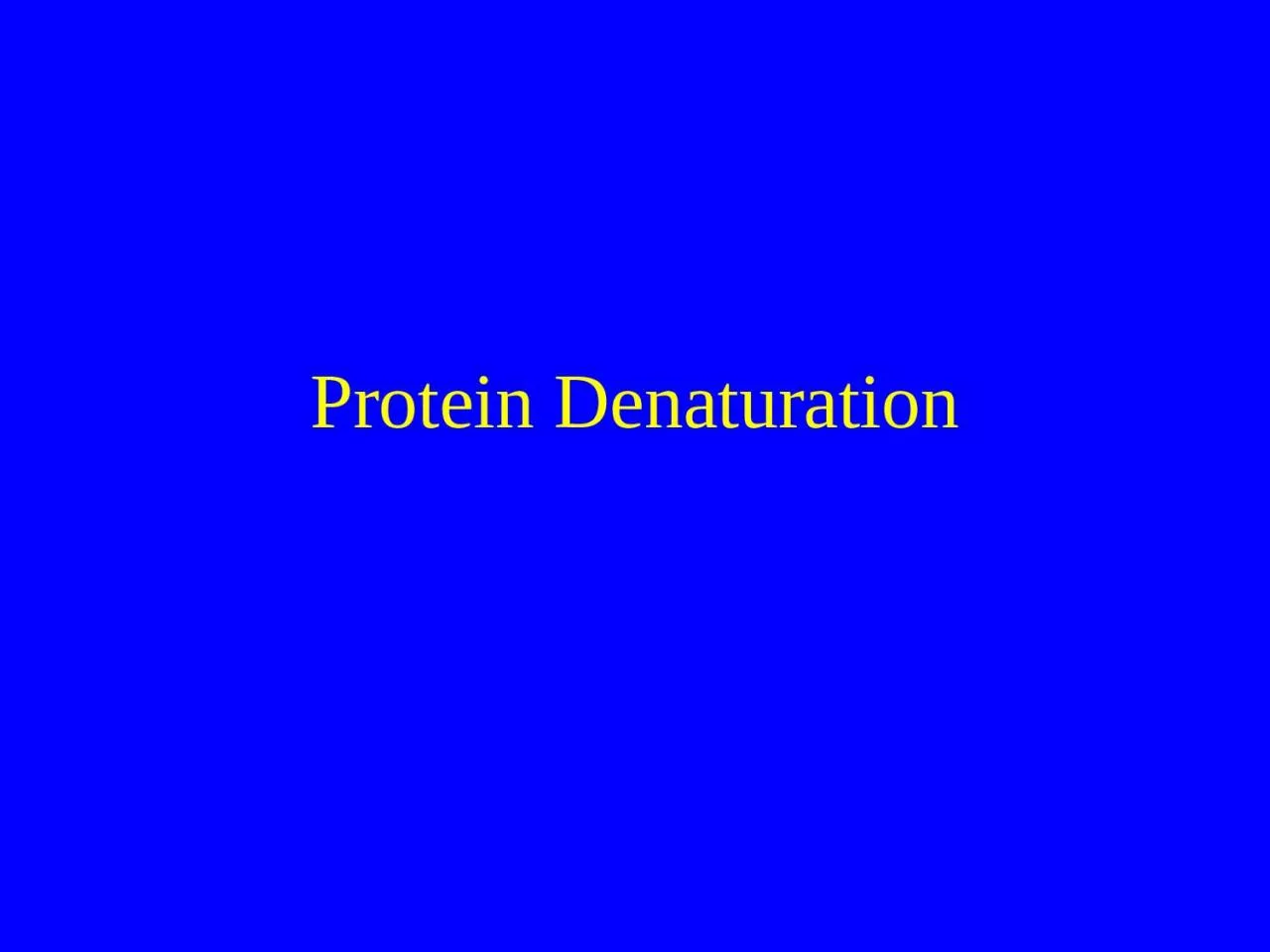

Denaturation Balance of forces Consequences of denaturation Effect of Temperature on Rate of Enzyme Action rate denaturant Denaturation Denaturation is a phenomenon that involves transformation of a welldefined folded structure of a protein formed under physiological conditions to an unfo ID: 1026122
Download Presentation The PPT/PDF document "Protein Denaturation Goals" is the property of its rightful owner. Permission is granted to download and print the materials on this web site for personal, non-commercial use only, and to display it on your personal computer provided you do not modify the materials and that you retain all copyright notices contained in the materials. By downloading content from our website, you accept the terms of this agreement.
1. Protein Denaturation
2. GoalsDenaturationBalance of forcesConsequences of denaturation
3. Effect of Temperature on Rate of Enzyme Actionratedenaturant
4. DenaturationDenaturation is a phenomenon that involves transformation of a well-defined, folded structure of a protein, formed under physiological conditions, to an unfolded state under non-physiological conditions.Occurs suddenly and completely over a narrow range of conditionsSlowly reversible (if at all)
5. Hydrophobic Interactions“Clathrate” waterPeptide chainIncreased chain entropyIncreased solvent entropy
6. Chain EntropyS=k ln WIncreased chain entropyOne native stateMany denatured states
7. Other FactorsHydrogen bondsElectrostatic interactionsConsider how the total number and strength of these bonds changes as a result of denaturation
8. Balance of ForcesChain entropySolvent entropyother forcesDG=DH-TDSDG=DH-TDS
9. Effect of T on Balance of ForcesFree energy change for denaturationT+ (oppose)- (favor)Chain entropy effectSolvent entropy effect
10. Thermal DenaturationTrypsinogen 55°CPepsinogen 60°CLysozyme 72°CMyoglobin 79°CSoy Glycinin 92°COat globulin 108°CTable 11Affected by pH, water, solutes
11. Why is Denaturation Sudden?Concentration of denaturant or temperature100%0%Native StructureCritical valueCOOPERATIVE PROCESS Partly denatured structure is weaker so begins to change faster
12. Types of DenaturationTemperatureOrganic solventsSurfacepHShear
13. Reversibility?One native formMany denatured formsRefolding is a complex process – particularly for large proteins or complex proteins
14. Energy SurfaceChanges in ConformationFree energyOne native state (true energy minimum)Many secondary minima amongst denatured states
15. Behavior of Denatured ProteinHydrophobic coreHydrophilic surfaceNATIVEAGGREGATEDor other ingredient interactionsDENATUREDUnfolding forces some hydrophobic AA to surfaceFast under non-physiological conditionsSlow under physiological conditions
16. Consequences of DenaturationLoss of enzymatic activity (death)Destruction of toxinsImproved digestibilityLoss of solubilityChanges in texture
17. Denaturation The conversion of a biologically functional molecule into a non-functional formThere are many denatured states but one native stateProteins can regenerate to their native state but slowlyDenatured proteins have a greater tendency to aggregate.